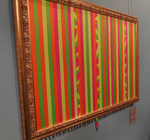
SAVE THE
DATE
Mustang Teffen, Spa-Francorchamps // 26.6..-1.7.24
Harley Davidson Days Swiss // 3. - 8.7.24
Mustang Meeting Swiss // 2. - 4.8.24
Expo Houten // 4. - 5.9.2024
From Strap to Glory
 Lanyards, also known as neck straps, are versatile accessories that are used to carry small items on the body. Originally used in a military context, over time they underwent an exciting transformation and today serve not only practical but also decorative purposes. The world of advertising items just can't be imagined without them.
Lanyards, also known as neck straps, are versatile accessories that are used to carry small items on the body. Originally used in a military context, over time they underwent an exciting transformation and today serve not only practical but also decorative purposes. The world of advertising items just can't be imagined without them.Lanyards, also known as neck straps, are much more than just ordinary bands, ribbons or cords. They are used to securely carry small objects on the body, be it wrapped around the neck or attached to the wrist. You may even have heard the term “keylace” sometimes used as its synonym. But where does this versatile accessory come from?
The roots of the word “lanyard” can be traced back to the French word “laniere,” which translates to “strap.” Initially, this term was closely linked to military matters. At that time French soldiers and daring pirates wore these bands to ensure that they did not lose their weapons, be it while climbing the masts of their ships or during a fierce battle. Even in World War II, soldiers could be seen using lanyards to attach their pistols to their uniforms.
Over time, lanyards evolved and special attachments that allowed for easy replacement of weapons, tools, and other items were added to them. That made them extremely useful in both military and civilian life.
Nowadays, while continuing to fulfill their practical purpose, lanyards also became decorative accessories. They enjoy great popularity in craftsmanship as well as being a safety device used in the business world. In the 1950s, weaving lanyards became a popular craft for children in France and the United States.
By weaving lanyards, children could learn to tie complex knots such as the box knot, the Chinese knot, the triangle knot or the butterfly knot while developing their craft skills. In France, this creative and often colorful craft is known as "Scoubidou," while in the United States it is referred to as "Boondoggle."
In the business and event world, lanyards are used as a means of displaying ID and access cards. They contribute to security at events and company locations by enabling the identification and organizational affiliation of people.
Lanyards also fulfill another very important function in the corporate world: corporate branding. Companies can customize these practical accessories and have them printed with their logo to use them as effective promotional and marketing items.
But lanyards are much more than just a way to present ID cards or carry keys. They are also fascinating works of art with a rich and adventurous history. Next time you order lanyards for your event, concert or convention, remember that they have the potential to strengthen your brand's identity while telling an exciting story.






